How to Format a Hard Drive on Ubuntu
Perform Quick Format

Open the Disks program. You can find it quickly by opening Dash and typing disks. All drives connected to the computer will appear on the left side of the window.

Select the drive you want to format. All drives will be in the left pane. Be careful when choosing a drive because all data on the partition will be erased when you format it.

Click the Gear button and select "Format Partition". A new window for configuring the file system opens.

Select the file system you want to use. Click the "Type" menu and select the file system you want to use.
If you want to use the drive to transfer files between Linux, Mac, Windows computers or most devices that support USB storage, select "FAT."
If you only use the drive on a Linux computer, select "Ext4."
If you only use the drive on Windows, select "NTFS."

Name the disk cell capacity. You can enter a label for the formatted drive capacity in the blank data field. This will help you identify the drive.
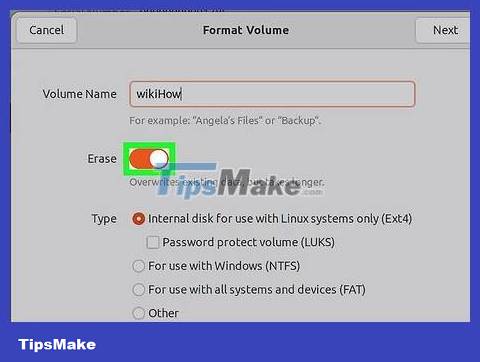
You can choose to delete securely or not. By default, formatting erases but does not overwrite data on the drive. If you want to securely erase content, select "Overwrite existing data with zeroes" from the "Erase" menu. This format option takes longer, but it will be more secure.
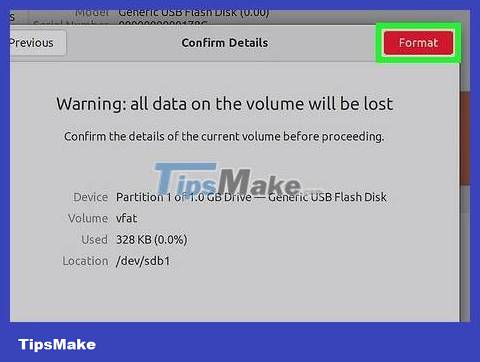
Click the "Format" button to get started. You will be asked to confirm before proceeding. Formatting will take a long time for large drives or when you select the secure erase option.
If you have difficulty formatting the drive, use GParted in the next step.
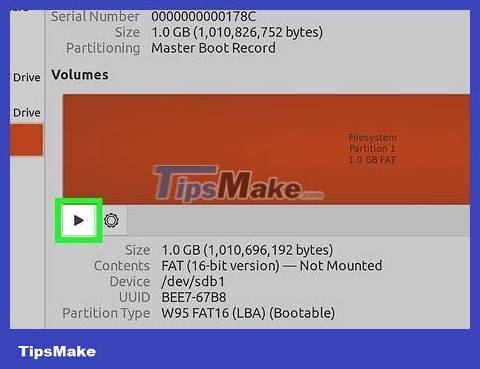
Mount the drive after formatting. After formatting the drive, click the "Mount" button that appears under the Volumes graph. The partition will be mounted and you will be able to access the filesystem for storage. Click the link that appears to open the drive in a file browser, or open the Files program and find the drive in the left pane.
Use GParted
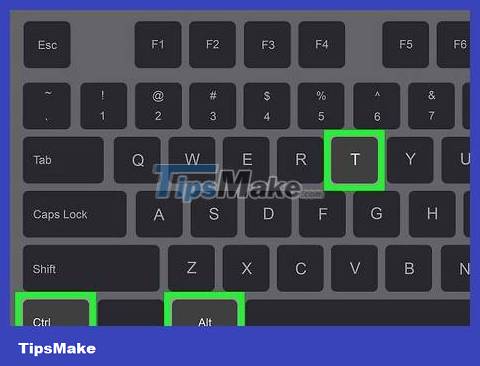
Open Terminal. You can open Terminal from Dash, or press Ctrl+ Alt+ T.
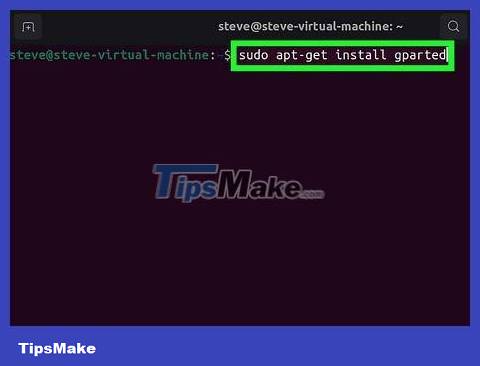
Install GParted. Enter the following command to install GParted. You will be asked to enter your user password, which will not appear as you enter it:
sudo apt-get install gparted
Press the key Ywhen asked to continue.
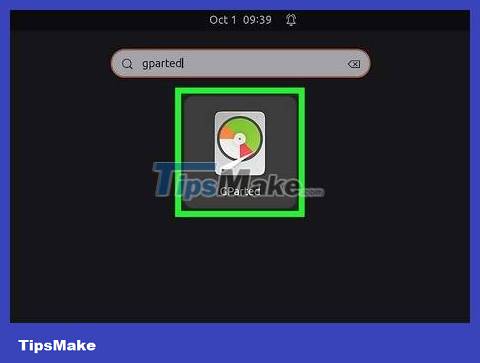
Launch GParted from Dash. Open Dash and type "gparted" to find GParted Partition Editor." You will see a bar representing the current drive partition and the free space on it.
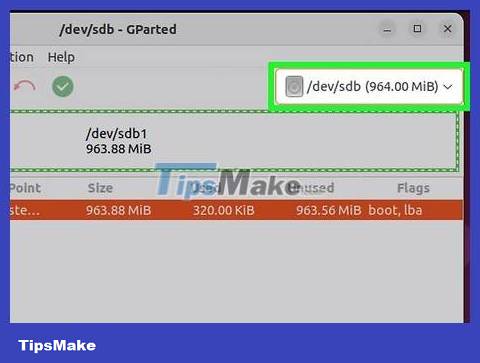
Select the drive you want to format. Click the drop-down menu in the upper right corner to select the drive you want to format. If you can't tell the difference, look at the drive size to determine.
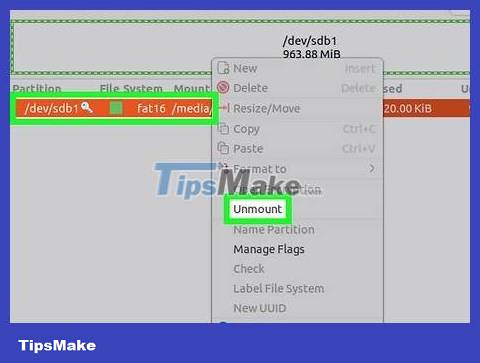
Unmount the partition you want to change or delete. To make changes in GParted, you need to unmount the partition first. Right-click the partition in the list or chart and select "Unmount".
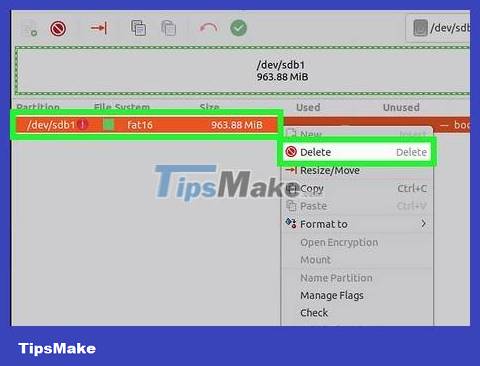
Delete existing partition. The partition will be deleted and converted to unknown partition. You can then create a new partition from this and format the drive using the filesystem.
Right-click the partition you want to delete and click "Delete".
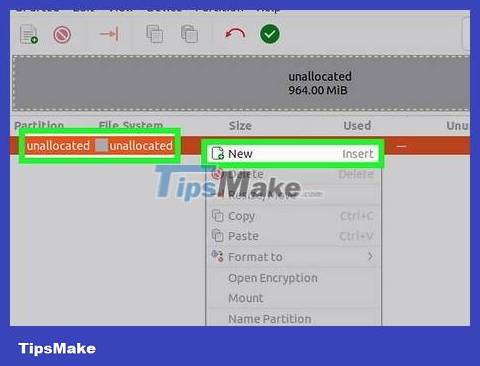
Create new partition. After deleting the partition, right-click on the unknown part and select "New". The process of creating a new partition will begin.
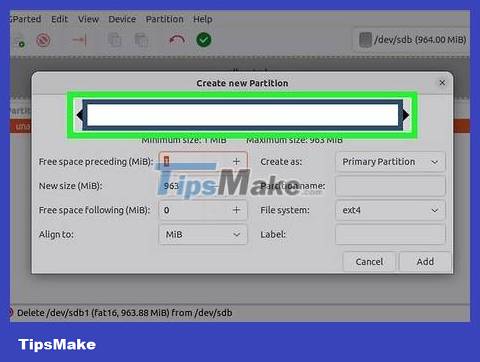
Choose partition size. When you create a new partition, you can use the slider to choose how much space you want to assign to that partition.
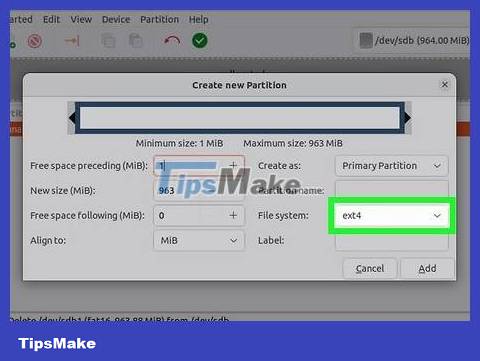
Select the partition's file system. Use the "File system" menu to choose a format for the partition. If you plan to use the drive for multiple operating systems and devices, select "fat32". If you only use the drive in Linux, select "ext4."
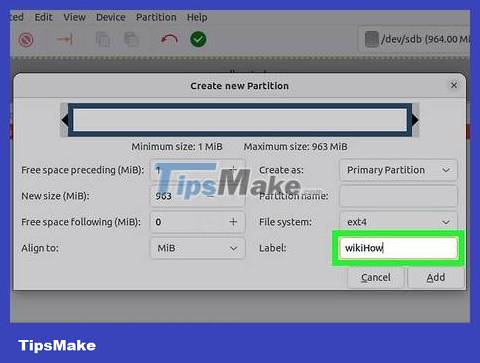
Name the partition. This will help you easily identify partitions on the system.
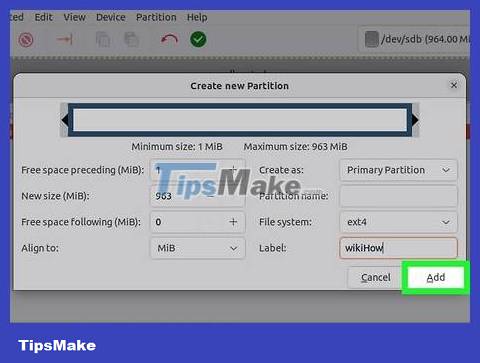
Click "Add" when finished configuring the partition. The partition will be added to the execution queue at the bottom of the screen.
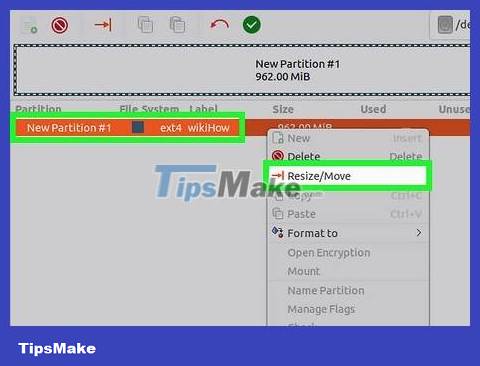
Resize the partition (optional). One of the features of Gparted is resizing partitions. Resizing a partition will create space so you can create new partitions. Basically, this allows you to divide the drive into multiple parts without affecting the data on it.
Right-click the partition you want to resize and select "Resize/Move".
Drag the edges of the partition to create an empty drive first and then.
Click "Resize/Move" to confirm the changes. You need to create a new partition from the unknown part according to the instructions above.
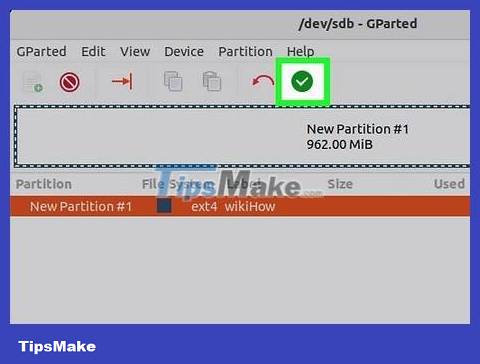
Click the green check mark to start applying the change. No changes will be applied to the drive until you click this button. After clicking, all partitions that you set to delete will be deleted along with all the data on them. You need to be sure about everything before proceeding.
It may take a while to complete all the processes, especially if you are working with multiple partitions or large drives.

Find the drive you just formatted. Once the formatting process is complete, you can close GParted and find the drive in the Files program's drive list.
You should read it
- How to Format a USB Flash Drive in Ubuntu
- How to Format a hard drive with the CMD command
- Instructions to install Ubuntu directly from the hard drive
- How to Format a Hard Drive
- How to Format a Hard Drive Using Ubuntu
- How to reformat an external hard drive does not cause data loss
- How to format an external hard drive to FAT32?
- How to Format a Hard Disk
May be interested
- How to format an external hard drive to FAT32?
 format the external hard drive to fat 32 format will ensure the life of your usb. in the following article, network administrator will introduce and guide you 2 simple ways to format external hard drive to fat 32 format.
format the external hard drive to fat 32 format will ensure the life of your usb. in the following article, network administrator will introduce and guide you 2 simple ways to format external hard drive to fat 32 format. - How to Format a Hard Disk
 formatting a hard drive allows you to use it on your computer to store files and install programs on. the format you choose for the drive determines the drive's compatibility. formatting a drive will erase all of the data currently on the...
formatting a hard drive allows you to use it on your computer to store files and install programs on. the format you choose for the drive determines the drive's compatibility. formatting a drive will erase all of the data currently on the... - How to format the hard drive on Windows 11
 sometimes, work requirements or a specific use situation force you to 'clean' all the data stored in the hard drive on your windows 11 pc.
sometimes, work requirements or a specific use situation force you to 'clean' all the data stored in the hard drive on your windows 11 pc. - Top 10 free and easy-to-use hard drive dividers and formats
 introduction top 11 software to divide hard drive, format hard drive, manage hard drive effectively on windows computer for free and easy to use.
introduction top 11 software to divide hard drive, format hard drive, manage hard drive effectively on windows computer for free and easy to use. - Boot and run Ubuntu from the USB drive
 running an operating system on a usb drive, such as windows, is quite useful. this way you can restore data from the hard drive and copy that data to external hard drives in case the computer does not boot or scan the computer for viruses. this tipsmake article will show you how to boot and run ubuntu from a usb drive.
running an operating system on a usb drive, such as windows, is quite useful. this way you can restore data from the hard drive and copy that data to external hard drives in case the computer does not boot or scan the computer for viruses. this tipsmake article will show you how to boot and run ubuntu from a usb drive. - Reinstalling Windows does not need to format the hard drive
 what will you do when windows crashes? of course, the most common is still to reinstall the operating system. many people still regularly format the hard drive every time they do this, but if done too much, it will adversely affect the durability of the hdd. is it really necessary to format every time you reinstall?
what will you do when windows crashes? of course, the most common is still to reinstall the operating system. many people still regularly format the hard drive every time they do this, but if done too much, it will adversely affect the durability of the hdd. is it really necessary to format every time you reinstall? - How to format and format a hard drive on a Windows computer
 when you need to format the hard drive for your windows computer, don't worry and rush. you need to understand correctly about hard drive format and how to format the hard drive below
when you need to format the hard drive for your windows computer, don't worry and rush. you need to understand correctly about hard drive format and how to format the hard drive below - How to Connect an External Hard Drive to a Macbook Pro
 usually, to connect an external hard drive to your computer, you just plug it in and that's it. however, with a macbook pro or any other mac, the hard drive must be formatted according to a file system supported by the mac. this process will erase all data on the hard drive. if like most hard drives on the market, your hard drive has been formatted with ntfs format, then with mac os x, you can only read but cannot write data on this hard drive.
usually, to connect an external hard drive to your computer, you just plug it in and that's it. however, with a macbook pro or any other mac, the hard drive must be formatted according to a file system supported by the mac. this process will erase all data on the hard drive. if like most hard drives on the market, your hard drive has been formatted with ntfs format, then with mac os x, you can only read but cannot write data on this hard drive. - How to identify hard drive failure, hard drive failure, bad hard drive on Windows
 how to know the hard drive is corrupted, the hard drive is bad, bad? if your computer has the following signs, the chances are great that it already has a problem, be prepared to take it to repair or replace the new hard drive.
how to know the hard drive is corrupted, the hard drive is bad, bad? if your computer has the following signs, the chances are great that it already has a problem, be prepared to take it to repair or replace the new hard drive. - How to convert a GPT hard drive format to an MBR while installing Win with the CMD command
 how to convert a gpt hard drive format to an mbr while installing win with the cmd command. normally, if we prepare to install windows fully and fully, we will perform the step of converting the hard drive format from our computer through cmd diskpart.
how to convert a gpt hard drive format to an mbr while installing win with the cmd command. normally, if we prepare to install windows fully and fully, we will perform the step of converting the hard drive format from our computer through cmd diskpart.










 What is USB Dongle and how does it function?
What is USB Dongle and how does it function? 8 ways to fix USB error that does not display capacity without formatting
8 ways to fix USB error that does not display capacity without formatting 7 best portable SSDs
7 best portable SSDs 5 disadvantages of the USB-C connector you should know
5 disadvantages of the USB-C connector you should know Compare USB4 and Thunderbolt 4
Compare USB4 and Thunderbolt 4 Top 5 best USB encryption software
Top 5 best USB encryption software